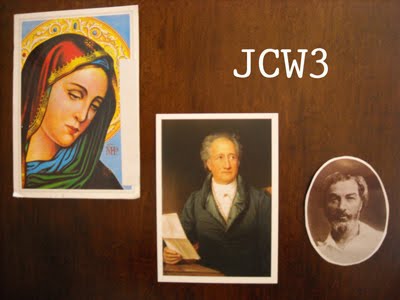

 Byzantine thrones. The one on the left is in the garden of the Peggy Guggenheim Collection in Venice, where I was an intern this summer. somewhere along the line, Peggy bought it when the
Byzantine thrones. The one on the left is in the garden of the Peggy Guggenheim Collection in Venice, where I was an intern this summer. somewhere along the line, Peggy bought it when the museum was still her private home. (Who doesn't wish they could just go out and buy a Byzantine throne?)
...on the left is another throne on the island of Torcello in the Venetian lagoon. It has come to be known as the throne of Attila, because the earliest settlers of the island came to that area to escape the warring movements of aggressive tribes, including the Huns. It was most likely used as a symbol of authority in the island's early system of communal government.
These memories from the summer connect to an amazing image I came across in readings for a medieval art history seminar, "Kings, Caliphs, and Emperors: Images of Authority in the Era of the Crusades." The Byzantine emperor's throne was flanked by a pair of golden lion statues. Surrounding the throne and lions were gilded trees full of gold birds. The birds and lions were automatons. When a visitor entered the throne room, the lions would roar, and the birds would sing. On top of all that, the throne would rise up into the air. All somehow created before the 11th century.


There are thrones & thrones. These are bishops' thrones from cathedrals, not imperial thrones. The automata you describe work on the priciple of the organ and this was invented in Greece by the 3rdC BC [check Wikipedia], so "all somehow created before the 11th century" sounds patronizing.
ReplyDelete